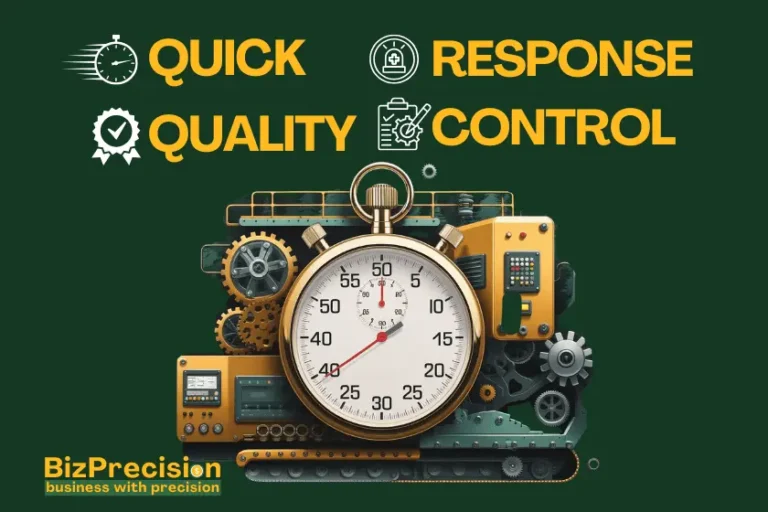System of Record vs Source of Truth: Understanding the Key Differences
A system of record (SOR) vs source of truth (SOT) are two key ways to manage data in an organization. These systems help companies keep their data accurate and useful.
According to Gartner’s 2023 Data Management Survey, 78% of organizations struggle with data inconsistencies due to not having clear systems in place. This shows just how vital it is to understand these concepts.
A system of record is the main place where data is stored and managed. Think of it as the official home for specific data. The source of truth, on the other hand, is the trusted place everyone goes to get the right information.
This guide will cover:
- The main differences between SOR and SOT
- How to pick the right system for your needs
- Best ways to set up and use these systems
- Common problems and how to fix them
Both systems play a big role in keeping data clean and trustworthy. Understanding how they work helps businesses make better choices about their data.
Understanding the Basics
In today’s data-driven world, it’s crucial to understand the difference between a System of Record vs Source of Truth. Though often used interchangeably, these terms play unique but complementary roles in managing data. Each is essential to ensure data integrity, accuracy, and accessibility within an organization.
To dive deeper, let’s first explore what a ‘System of Record’ entails, followed by an understanding of the ‘Source of Truth’.
What is a System of Record (SOR)?
A system of record is the main database where a company keeps its official data. It acts like a master file cabinet for all important information.
Here’s what makes an SOR special:
- It’s the official source: When two systems show different data, the SOR wins. According to IBM’s Data Management Report 2023, 92% of companies use a system of record to maintain data accuracy.
- It ensures data quality: The SOR performs quality assurance and quality control checks on data before it’s stored, enforcing strict rules to keep information clean and reliable.
- It tracks changes: Every update is logged and saved. This creates a clear history of who changed what and when, making it easier to fix mistakes.
What is a Source of Truth (SOT)?
A source of truth takes things one step further. While an SOR stores official records, an SOT is the one place everyone trusts for correct information.
Key features of an SOT include:
- Single version of facts: Everyone uses the same data. A recent McKinsey study found that companies with a clear SOT spend 30% less time fixing data errors.
- Real-time updates: Changes show up right away. When data updates in one place, it updates everywhere. This keeps all systems in sync.
- Built-in checks: The system makes sure data stays correct. It runs regular checks to catch and fix problems before they cause issues.
Why These Concepts Matter in Modern Data Management
Good data management makes a big difference in how well companies work. Here’s why these systems are so important:
Better decisions:
- Leaders can trust their data when making choices Teams spend less time checking numbers and more time using them
- According to Deloitte’s 2023 Data Quality Survey, companies with good data systems make decisions 40% faster
Fewer mistakes:
- Everyone works with the same information
- Updates happen in one place, not many
- This cuts down on errors by up to 65%, based on recent tech industry studies
More trust:
- People know where to find the right information
- They can trace where data came from
- This builds confidence in company data and reports
SOR vs SOT: Key Differences
Purpose and Function
While both systems help manage data, they serve different goals:
System of Record:
- Stores original data
- Keeps official records
- Maintains history
Source of Truth:
- Provides trusted information
- Ensures everyone sees the same thing
- Updates across all systems
These differences matter because they help companies pick the right tool for their needs.
Data Management Approach
Each system handles data in its own way:
SOR Focus:
- Data entry and storage: Manages the initial capture and retention of organizational information.
- Record keeping: Maintains comprehensive documentation of all data entries and modifications.
- Audit trails: Records detailed history of changes for compliance and tracking purposes.
SOT Focus:
- Data distribution: Ensures efficient delivery of information across organizational systems.
- System integration: Connects various platforms to maintain consistent data flow.
- Real-time updates: Synchronizes information changes instantly across connected systems.
The way these systems work affects how companies use them day to day.
Access and Authority
Control over data varies between systems:
SOR Controls:
- Strict access rules: Limits data modification capabilities to authorized personnel only.
- Limited editing rights: Restricts data changes to specific roles and responsibilities.
- Clear ownership: Assigns specific accountability for data management and maintenance.
SOT Controls:
- Broader access: Enables wider organizational visibility while maintaining security protocols.
- Automated updates: Streamlines data synchronization without manual intervention.
- Shared responsibility: Distributes data maintenance duties across designated team members.
These rules help keep data safe while letting the right people use it.
Implementation Strategies
Setting Up a System of Record
Getting an SOR right takes careful planning. Here’s a step-by-step guide:
- Pick your main system:
- Choose software that fits your needs
- Make sure it can handle your data volume
- Check that it works with your other tools
- Set up rules:
- Decide who can add or change data
- Create steps for checking data quality
- Make plans for fixing problems
- Train your team:
- Show everyone how to use the system
- Explain why rules matter
- Practice common tasks
Establishing a Source of Truth
Setting up an SOT needs a different approach:
Connect your systems:
- Link all data sources: Connect databases, applications, and third-party platforms into unified network.
- Set up automatic updates: Configure systems to sync data changes in real-time without manual intervention.
- Test how data flows: Verify information moves correctly between connected systems without loss or corruption.
Create clear processes:
- Define how data moves between systems: Establish rules for data transmission, transformation, and validation steps.
- Set up checks and balances: Implement verification procedures to maintain data accuracy and consistency.
- Make rules for handling conflicts: Create protocols for resolving data discrepancies between different systems.
Monitor and adjust:
- Watch how things work: Continuously track system performance and data synchronization effectiveness.
- Fix problems quickly: Address synchronization issues and errors as soon as they’re detected.
- Update rules as needed: Modify data handling procedures based on operational requirements and feedback.
Integration Considerations
Getting systems to work together takes work:
Technical needs:
- Fast connections: Implement high-speed network infrastructure for real-time data transfer.
- Reliable backup systems: Deploy redundant storage solutions to prevent data loss.
- Good security: Establish robust protection measures for data during transfer and storage.
Process needs:
- Clear update rules: Define specific procedures for when and how data updates occur.
- Problem-solving steps: Create structured approaches for troubleshooting integration issues.
- Regular system checks: Schedule routine maintenance and performance evaluations of integrated systems.
Business Applications and Use Cases
Industry-Specific Examples
Different industries use these systems in unique ways:
Financial Services
- Banks use SORs for transaction records: Maintains permanent, unalterable history of all financial transactions.
- Investment firms need SOTs for real-time pricing: Ensures traders access identical pricing data for informed decisions.
Healthcare
- Patient records live in SORs: Stores complete medical histories as permanent, authoritative documentation.
- Treatment info comes from SOTs: Provides consistent, current treatment protocols across medical facilities.
Manufacturing
- Inventory tracking uses SORs: Records definitive stock levels and movement history.
- Production planning needs SOTs: Enables real-time coordination across production facilities and supply chain.
Common Challenges and Solutions
Most companies face similar problems:
Data Matching Challenges
- Problem: Different systems show different numbers: Inconsistencies arise when databases aren’t properly synchronized.
- Solution: Set up regular data checks: Implements automated verification routines to maintain consistency.
- Result: Fewer mistakes and better trust: Reduces errors and builds confidence in organizational data.
System Speed Issues
- Problem: Slow updates cause confusion: Delayed synchronization creates temporary data discrepancies.
- Solution: Upgrade connection speeds: Enhances network infrastructure for faster data transmission.
- Result: Everyone gets updates faster: Minimizes lag time between data changes and system updates.
Training Issues
- Problem: People use systems wrong: User errors occur from insufficient system knowledge.
- Solution: Regular training sessions: Provides ongoing education about proper data handling procedures.
- Result: Fewer user mistakes: Reduces error rates through improved user competency.
Best Practices and Guidelines
Data Governance Framework
Good rules help systems work better:
Key policies:
- Clear data ownership: Assigns specific responsibility for maintaining different data types.
- Regular quality checks: Implements scheduled audits to verify data accuracy.
- Problem-solving steps: Establishes standardized procedures for addressing data issues.
According to Gartner’s 2024 predictions, companies with strong data rules save 40% on fixing mistakes.
Compliance needs:
- Follow data laws: Ensures adherence to regulatory requirements for data handling.
- Keep good records: Maintains detailed documentation of all data-related activities.
- Check for problems: Conducts regular audits to identify compliance issues.
Security steps:
- Control who sees what: Implements role-based access control for data protection.
- Track system use: Monitors all system activities for security purposes.
- Protect sensitive data: Applies appropriate safeguards to confidential information.
Maintenance and Updates
Keeping systems running well takes work:
Regular checks:
- Look for problems: Conducts systematic reviews to identify potential issues.
- Fix issues quickly: Addresses discovered problems through immediate intervention.
- Update old data: Refreshes outdated information to maintain accuracy.
Update process:
- Plan changes carefully: Develops detailed strategies for system modifications.
- Assure quality before going live: Run updates through a controlled environment to confirm stability and quality before rollout.
- Train people on updates: Educates users about new features and procedures.
Quality steps:
- Check data regularly
- Fix wrong information
- Track how well things work
Security Considerations
Keeping data safe is crucial:
Protection needs:
- Strong passwords: Implements robust authentication requirements for system access.
- Encrypted data: Secures sensitive information through advanced encryption protocols.
- Regular backups: Maintains frequent data copies for disaster recovery.
Access control:
- Clear user roles: Defines specific permissions based on job functions.
- Limited permissions: Restricts access based on need-to-know principles.
- Activity tracking: Monitors and logs all user interactions with systems.
Risk management:
- Regular security checks
- Emergency plans
- Staff training
Future Trends and Evolution
Emerging Technologies
New tools are changing how we handle data:
AI and ML:
- Smarter data checking: AI algorithms detect and flag data anomalies automatically.
- Automatic updates: Systems learn and improve data processes without human intervention.
- Better problem finding: Machine learning identifies potential issues before they escalate.
Blockchain use:
- More trusted records: Decentralized ledgers ensure data cannot be altered without authorization.
- Better tracking: Real-time monitoring of all data modifications and access points.
- Fewer mistakes: Built-in verification reduces human error in data entry.
Cloud systems:
- Easier access: Teams can retrieve data from anywhere with internet connection.
- Better backup: Automatic cloud storage ensures data is never lost.
- Faster updates: System improvements deploy instantly across all access points.
Industry Direction
The future looks exciting:
Emerging Technologies
- Smarter data checking: Utilizes AI to improve accuracy of data validation.
- Automatic updates: Implements self-maintaining systems for data synchronization.
- Better problem finding: Employs predictive analytics to identify potential issues.
Market Trends
- Moving to cloud systems: Transitions from local to cloud-based data storage.
- Using more AI: Incorporates artificial intelligence for improved data management.
- Better security: Enhances protection through advanced security measures.
Expert Views
- Focus on speed: Prioritizes quick data access and processing capabilities.
- More automation: Reduces manual intervention in data management processes.
- Better protection: Strengthens security measures against emerging threats.
The field keeps changing as new tools come out. Companies need to stay current to keep their data useful and safe.
Conclusion
Understanding the difference between a system of record and source of truth helps companies work better with their data. Let’s recap the main points:
Systems of record keep official data safe and tracked. They work like a secure vault for your most important information. Sources of truth, on the other hand, make sure everyone uses the same, current data.
Both systems play key roles in modern business. SORs maintain accuracy, while SOTs help teams work faster and make fewer mistakes. The best setup often uses both, with each doing what it does best.
Companies that get these systems right see big benefits. Their teams make better choices, work faster, and trust their data more. As data keeps growing more important, having the right systems matters more than ever.







